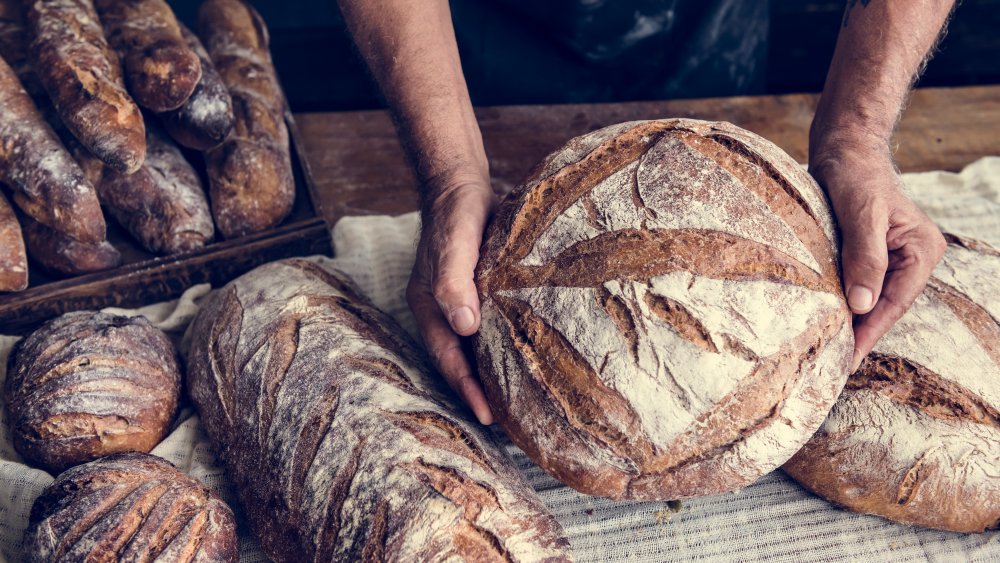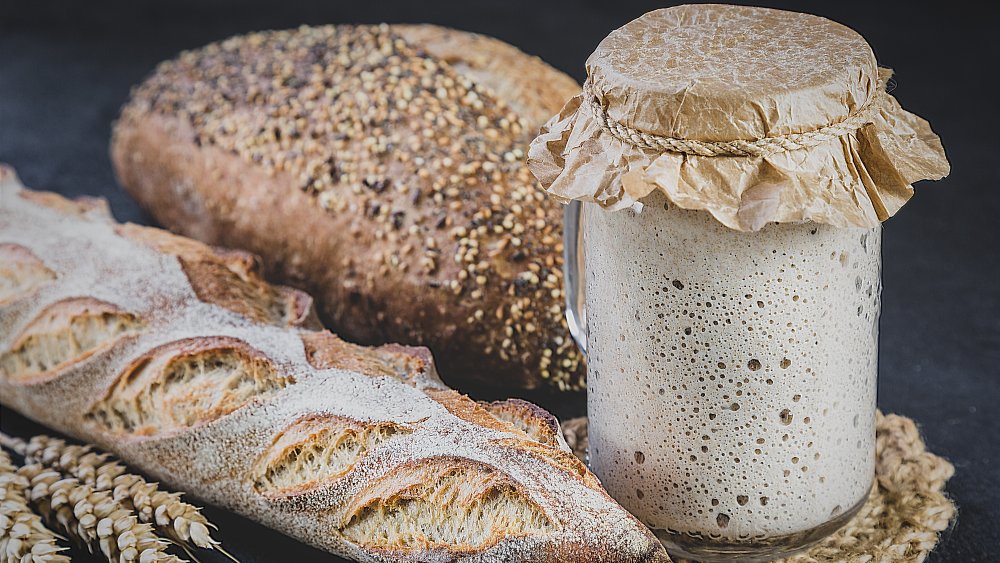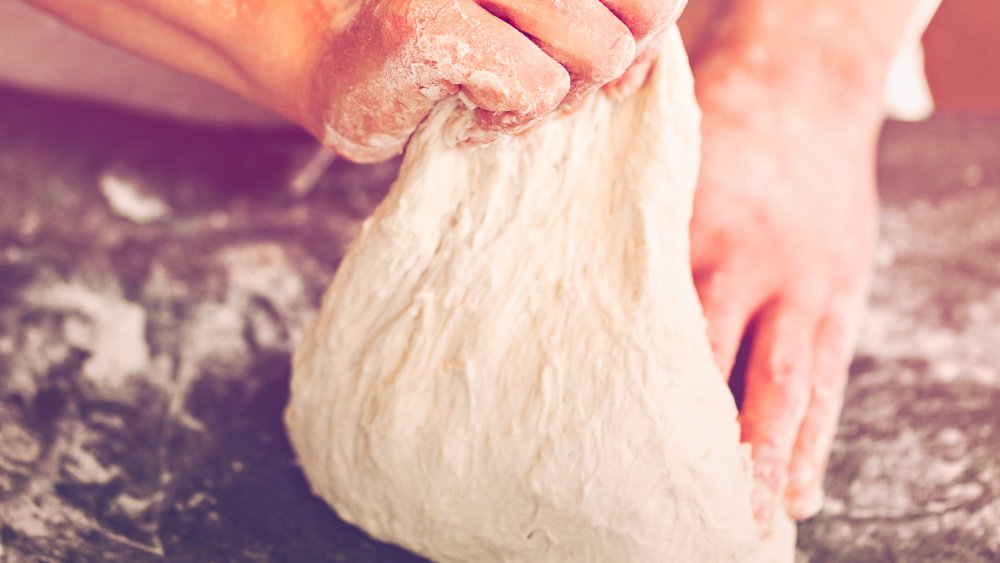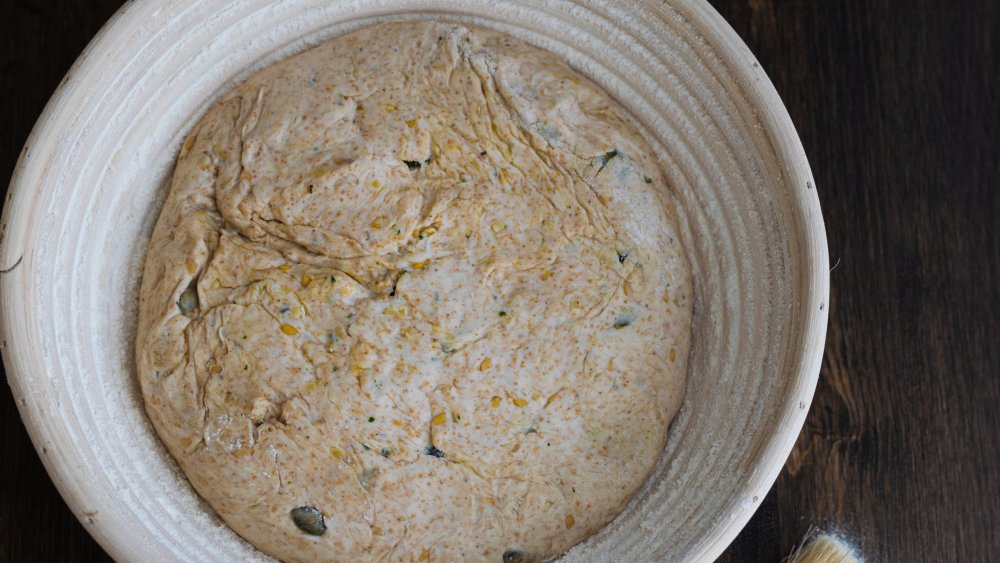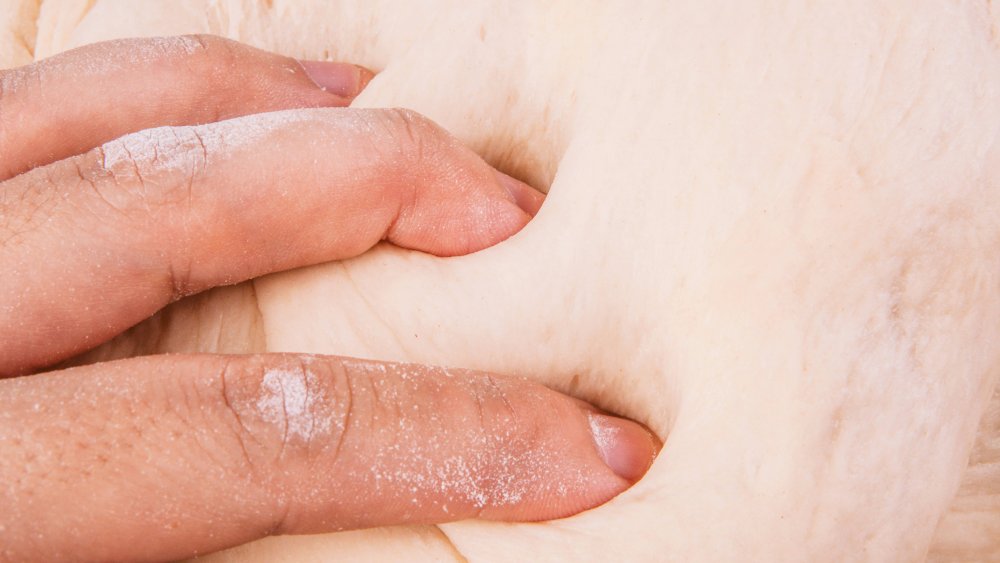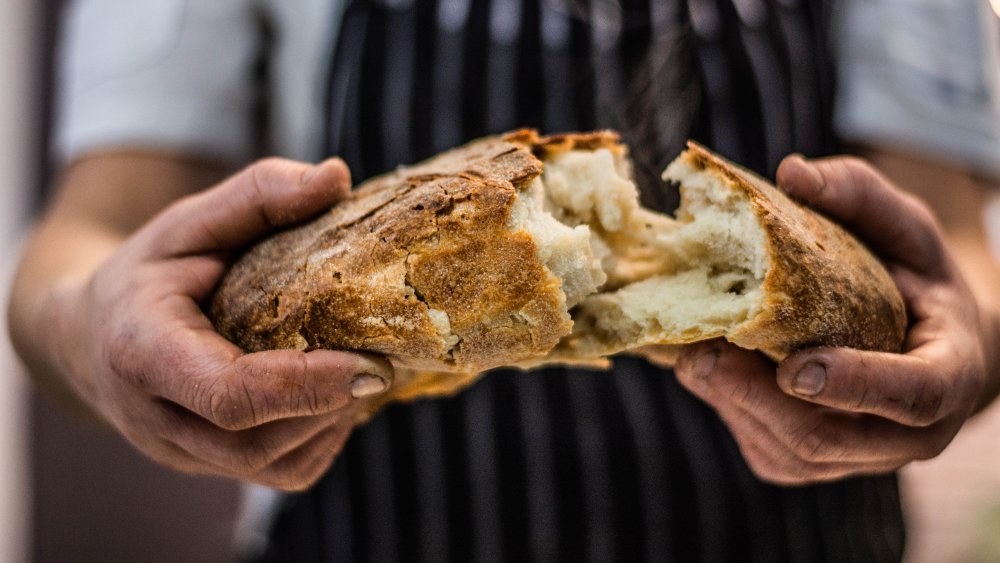You've Been Making Sourdough All Wrong This Entire Time
So you thought you'd try your hand at baking bread, and you've always been a fan of sourdough. How hard could it be to bake it yourself? You'd be surprised. And, in fact, you were — and also disappointed. Instead of a beautifully brown, Instagram-worthy loaf, yours came out pale and lumpy and just plain weird. You followed the recipe exactly, so what could have gone wrong?
Baker Nora Allen, whom Food and Wine calls the Sourdough Whisperer, says not to worry. Despite its cosmetic imperfections, your bread will probably still taste delicious with butter (try these flavored ones!) or maybe a little jam.
If you really want to improve your sourdough game, though, there's nothing like practice to bake a better loaf. That, and incorporating these baking tips to help you avoid common sourdough mistakes. Next time you open the oven to a fresh-baked loaf, you'll triumphantly cry "nailed it!" as you reach for your phone to snap a pic.
Take proper care of your sourdough starter
According to the baking pros at King Arthur Flour, you can actually buy a pre-made starter for your sourdough – in fact, they'll be happy to sell you some themselves. If you feel like that's cheating, though (after all, you can just buy pre-baked sourdough bread loaves, too), they offer a few helpful hints for making sure you don't kill off your starter before it gets the chance to, well, start anything.
It seems you don't need to worry about feeding your starter the wrong amounts of flour or water, as these mistakes can be easily corrected. Nor do you have to time the feedings down to the exact minute, either. You can also safely stir your starter with a metal spoon and even keep it in the freezer for a few days without killing it off. What you cannot do, however, is to let it hit 140 degrees (like, if you store it in the oven, then forget and turn the oven on), or neglect it until it starts getting all moldy and gross. If the liquid that collects at the top of your starter appears grey or brown or even black, it's actually still probably ok, but if you see any pink or orange color, your starter's gone bad and should be tossed.
Never knead your sourdough
Pro Home Cooks advise that you should never knead sourdough dough. Say what? How can you not knead bread dough? Well, you're still going to work it — you're not just going to let it sit there. Instead of kneading it or punching it as you might with a pizza dough, though, they advise using a technique they call "shake, pull, and fold." Stretching and folding the dough will align its gluten strands without removing the gas that has built up from its fermentation, and this makes for an airy crumb. The shaking, pulling, and folding should be done every 30 minutes for two hours, and by the fourth S, P, and F, your dough should be looking smooth and shiny and feeling nice and supple.
Don't let the dough sit too long
Food and Wine recommends that you not let your dough "overbulk", which is what will happen if you let it sit out so long that the starter eats through all of the starches and sugars and gets worn out. Overbulked dough results in a loaf that will have a yellowish crust, and the inside of the bread will be full of holes with almost a Swiss cheese-y kind of look.
While the bulking process typically takes two to five hours at room temperature, Pro Home Cooks share a hack for when you don't have time to cook the bread right away. Just toss the dough in the fridge and let it sit there overnight — the lower temps slow down the fermentation process since the yeast isn't as active when it gets cold, but the bacteria will still be active and the longer fermentation time may actually give your bread more flavor.
Poke it before you bake it
Pro Home Cooks also have a suggestion as to how you can tell whether your dough is oven-ready — just give it a poke. If you poke down about one inch into the top of your unbaked loaf and the dough springs back, it's not done rising. If you poke it and it doesn't bounce back at all, then you might have overproofed it, so you'll have a holey loaf as above. If you poke and it springs back, but still leaves a dent, then your sourdough should be good to go — straight into a (preheated) oven, that is.
Don't trust the time given in the sourdough bread recipe
My Recipes reminds that no recipe can take into account the variations in individual oven temperatures, nor can they factor in room temperature, humidity, et cetera — all of these conditions have the ability to affect baking times. Look at the time given in the recipe as a general guideline, but remember that your loaf might cook more quickly or more slowly.
Pro Home Cooks says it's best to judge by crust color rather than time, and that ideally you want a dark brown charred crust (not black, though, and definitely not pouring out smoke). They offer the additional advice that once the bread is done cooking, you can "cure" the bread by leaving it in the oven with the heat off and the door cracked so the residual heat will allow the crust to dry out, something they say adds a whole new depth of flavor.
